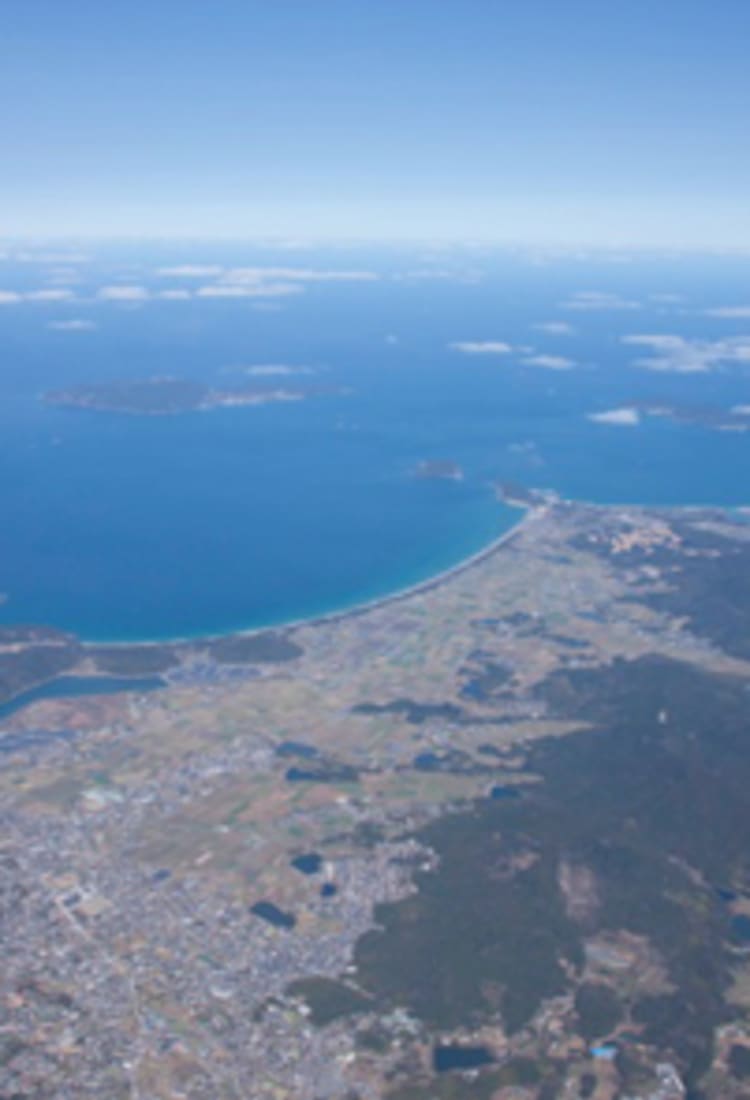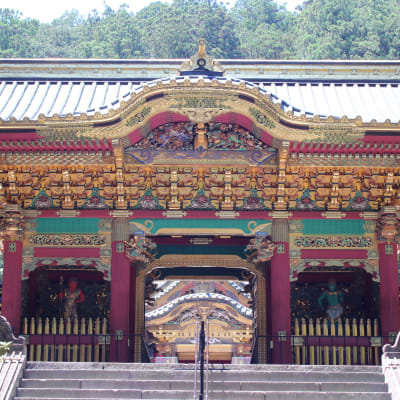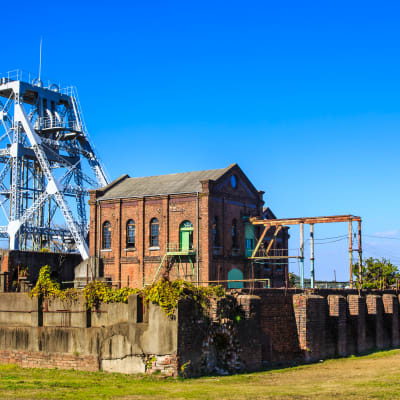

Sacred Island of Okinoshima & Associated Sites in the Munakata Region (UNESCO) Esoteric shrines with a rich history
These three shrines have a colorful history, going back to an ancient period of new religious development and cultural exchange
Along the northwest coast of Kyushu are three shrines with centuries of cultural and archaeological history. These date back to the Munakata clan, who ruled over the region in the 4th century. Marked by prosperity, religious development, and international communication, the Munakata clan contributed a lasting legacy to the country, particularly in the development of Shinto rituals in Japan. These three shrines are the most exemplary lasting structures showcasing their contributions.
On the mainland, in Munakata , is Hetsu-miya Shrine (known as Munakata Taisha), believed to be one of the oldest Shinto ritual sites in Japan. The nearby island of Oshima is home to Nakatsu-miya Shrine, an ancient shrine with beautiful ocean views. The third shrine on Okinoshima is off limits to the public, but has a mysterious and fascinating history of its own.


Highlights
- Heading to the Shimpokan Museum at Hetsu-miya Shrine to view artifacts from the Korean peninsula and mainland China, and ancient votive objects made in Japan
- Walking around the tomb mounds near Munakata and neighbouring Fukutsu, where leaders from the 4th century are buried
- Take a ferry to Oshima Island to visit Nakatsu-miya Shrine and Okitsu-miya Yohaisho, a worship place where you may glimpse the sacred island of Okinoshima in the distance
One of the first shrines used in Japan's native Shinto religion
Conveniently located on the mainland a short trip from the city of Fukuoka , Hetsu-miya (also referred to as Munakata Taisha) is the most easily accessible of the three. The current main hall dates back to the 16th century.
In addition to the well-preserved Shinto architecture and expansive grounds, the site is also home to the Shimpokan Museum, which contains some 80,000 artifacts and votive offerings from the sacred island of Okinoshima.

A serene shrine sits on the cliffs above the ocean
Located approximately 10 kilometers off Fukuoka's coast, the island of Oshima is home to the second Munakata shrine, Nakatsumiya. Disembarking from the ferry, you'll come across a torii gate and other small affiliated shrines. Okitsu-miya Yohaisho, a place for worshipping Okinoshima island from afar, sits at the foot of a mountain on the north side of the Oshima island.


Munakata Taisha
A sacred island with a shrine tended by a Shinto priest
The most famous of the three shrines is Okitsumiya, located on the remote island of Okinoshima . The shrine encompasses the entire island and is off limits to visitors. A solitary Shinto priest spends around two weeks at the shrine, performing rituals and maintaining the grounds.

Learn about the history of Japan's early relationships with its neighbors in Korea and China
Many archaeological artifacts found on Okinoshima originate from Korea and China, including pottery, gold rings, gilt bronze harnesses, and more. These items were left on Okinoshima as ritual offerings throughout the 4th to 9th centuries. Some of these items can be seen at the Shimpokan Museum.
View the ancient tombs of the region's old rulers
Near Hetsu-miya Shrine on the mainland, you'll come across a series of tombs made from mounds of raised earth, with some resembling the shape of a keyhole. These tombs were built in the 5th and 7th centuries for notable figures within the Munakata clan.


How to Get There
From Fukuoka , take a local or rapid train along the JR Kagoshima Main Line from Hakata Station to Togo Station.
From Kitakyushu , take a local or rapid train along the JR Kagoshima Main Line from Kokura Station to Togo Station.
To reach the island of Oshima, you can take a 25-minute ferry ride from Kono Ferry Port in Munakata .











































































